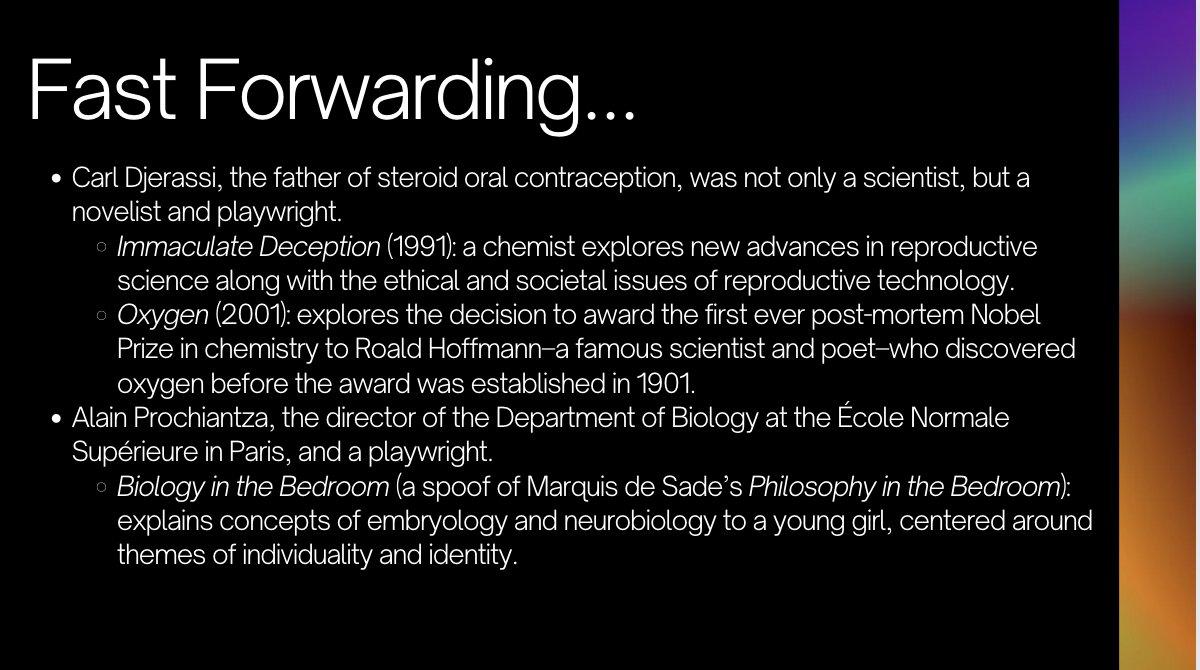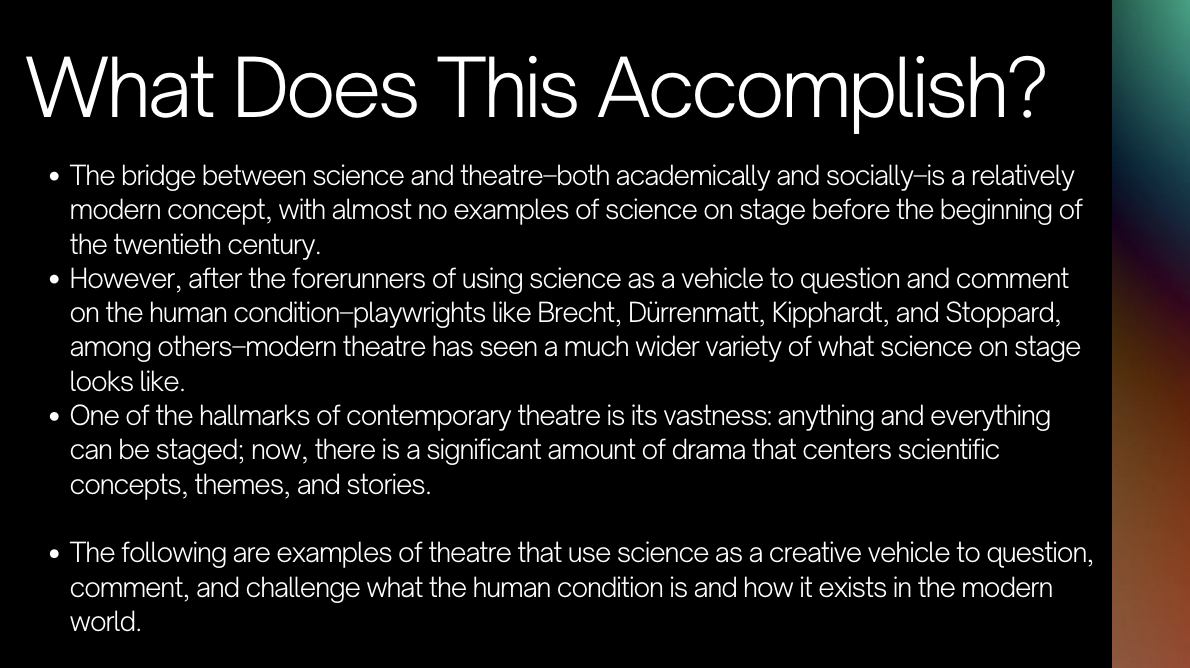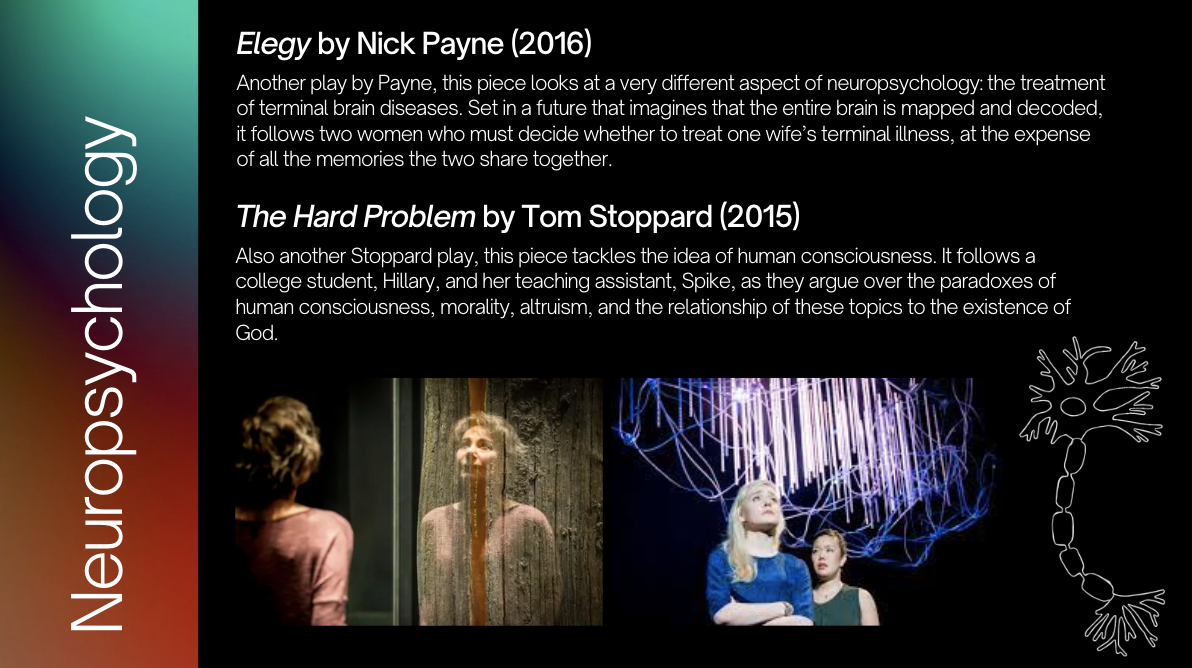
Science On Stage: Methodology, Experimentation, and Storytelling as a Reflection of the Human Condition
ASDS THR 505: Theatre History and Dramatic Literature III
Take a look at samples from my research presentation!
⇩
Course research presentation for THR 505: Theatre History III @ Pace University; presented by Parker Jenkins
Abstract: Perpetuated by the left-brain/right-brain theory, the idea that art and science as distinct, separate, and non-overlapping disciplines has permeated not only academia, but society in general. One particular subdiscipline of art, theatre and dramatic arts, has been especially distinguished as uninvolved with the scientific world. However, theatre is inherently scientific: it involves systematic observation, experimentation, iteration, and testing to accomplish a final stage product, all steps in the scientific method. Not only this, but science is inherently theatrical: there is an observer, a director, design, and culminates from a distinct process into a public presentation. Combined, these two disciplines work in tandem to accomplish a singular goal: understanding the human condition. By definition, “science” is the pursuit of knowledge and understanding of the physical and natural world, and “theatre” is the pursuit of understanding and inhabiting human behaviors and psychology. Therefore, science and theatre work in tandem to understand both the world around us and the world within us. By showcasing scientific methodologies, experimentations, and concepts on the stage, it forces audiences and actors alike to reflect about their own pursuits of understanding, and ultimately, to reflect on the human condition. Science on stage serves as a vehicle for deeper understanding into the human desire for knowledge, how we obtain it, and how it ultimately changes us–for better or for worse.
This project was developed at ASDS’s THR 505: Theatre History III course as a semester-long research project focused on the evolution of theatrical performance and literature throughout specific moments of history. This presentation was a part of the requirements of a 30-minute presentation supported by a 20+ page research paper and defense Q&A session.








